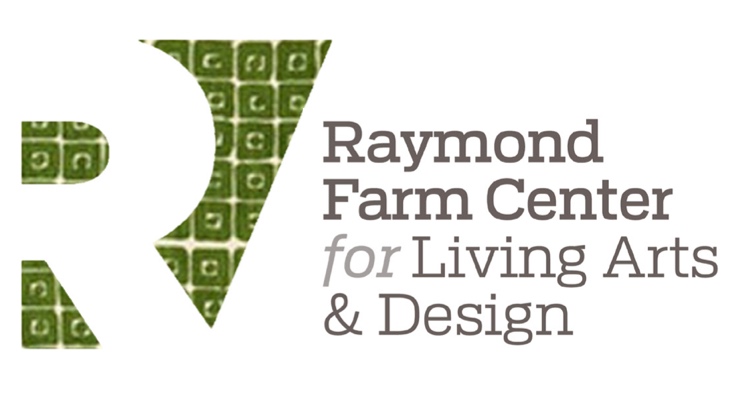Celebratory Tea Ceremony Commemorates Over 80 Years of History Between Nakashimas and Raymonds
“The aesthetic of chanoyu, the Japanese tea ceremony, had a profound influence on Nakashima’s approach to life, architecture, and design. To some people, the ceremony is simply a pleasant pasttime; to others, it is a social or vocational necessity leading to an
appreciation of the transcendent.”
—Mira Nakashima, from Nature Form and Spirit
Seated starting from the left: Host Morgan Beard, Mira Nakashima, Suzann Johnson, Art Gertel, Charlotte Raymond, Taeko Shervin
This tea ceremony commemorates the coming together of two extraordinary families, the Nakashimas and the Raymonds, over 80 years ago. Their shared story began in Tokyo in 1934 when George Nakashima, a gifted young architect who had recently graduated from Harvard and MIT, joined the Japan office of Antonin and Noémi Raymond. The Raymonds, who were European/American architects and designers, had been in practice in Japan for over a decade, having assisted Frank Lloyd Wright in the completion of the Imperial Hotel. Throughout this decade, they evolved their unique style of architecture, one that synthesized modern materials and principles with traditional Japanese design and craft. The shared story of Nakashima and the Raymonds was enriched by a mutual colleague and life-long friend, Junzo Yoshimura, who deepened both the Raymonds’ and Nakashima’s understanding of traditional Japanese architecture and culture.
Photos of staff working at the American Architectural and Engineering Company of Tokyo. Standing in the middle is Antonin Raymond with George Nakashima to his left.-- Antonin Raymond Autobiography, 1973, Published by Tuttle
A landmark of the Nakashima-Raymond relationship was their collaboration on the design and construction of Golconde, a dormitory of the Sri Aurobindo Ashram in Pondicherry, India. Begun in 1937, Golconde was the first work of modern architecture and the first reinforced concrete structure in India.
In 1938, war in Asia would bring the Raymonds—and in 1943, with the Raymonds’ help, Nakashima and his family—to New Hope, Pennsylvania. There on what became the Raymond Farm, the Raymonds created “the New Hope Experiment”— a design atelier where students learned design and architecture while working the land. The Raymonds shared their extended household with the Nakashimas for the next three years. While at the Raymond Farm, Nakashima shifted his primary focus from architecture to furniture design. Here he created some of his first signature works, such as the Milk House Table, which bears the name of the farm shed in which he worked. Nakashima soon “grew tired of feeding chickens,” and built his workshop and home within walking distance of the Raymond Farm. Eventually, the Raymond and Nakashima children would shortcut through the woods to play together on warm summer days.
The careers of Nakashima and the Raymonds would flourish in the following decades. George Nakashima went on to become one of the most celebrated art-furniture designers and master craftsman, not only of the 20th century, but of all time. Antonin and Noémi Raymond pioneered modern architecture in Japan in the first half of the 20th century and were instrumental in the rebuilding of Japan in the second half— inspiring generations of architects with their unique vision of modern architecture ever since. Nakashima and the Raymonds also shared a profound love for nature, a love that grounded and inspired their work.
Many thanks to everyone who came out to make this all possible! From the left: Vinni Cheng, Morgan Beard, Brandon Forsht, Taeko Shervin, Aaron Fleury, Terry Sherwin, Drew Hanson, Mary Lynn Howard, Jamie Kruse, Alba Ruiz, Marianna Frantz, Janet Raymond, Elizabeth Ellsworth, BoJenna, Kevin Nakashima, John Defazio
The story continues today. In this tea ceremony, Nakashima’s daughter Mira and the Raymonds’ granddaughter Charlotte honored the legacy of their families and their continued friendship. Hosted by the Raymond Farm Center for Living Arts & Design and the Nakashima Woodworkers, the ceremony will celebrate this 80-year relationship as Charlotte and Mira work to carry their forbearers’ values and spirit into the 21st century.
— John DeFazio AIA, Director of the Raymond Farm Center for Living Arts & Design
A Seasonal Arrangement
Urasenke Philadelphia Tankokai Association is pleased to participate in the Nakashima/Raymond Tea Ceremony. This event celebrated the 80-year history between the Nakashima and Raymond families.
The presentation featured many utensils with seasonal references. The calligraphic scroll which was displayed in the Tokonoma bore the kanji characters Shinka (Pure Heart Like a Flower) and was brushed by Etsuko, a Buddhist priest at one of Kyoto’s temples. In the Tokonoma as well, there featured an Arita ceramic vase (from Kyushu) and seasonal flowers.
Shinka " Pure Heart Like a Flower"
Mary Lynn Howard prepares the charcoal for the brazier
The room itself was setup in the style which employs a portable bronze brazier, cast iron kettle in the shape of Mt Fuji, and black lacquered utensil stand. Charcoal was laid to build the fire, and special aloeswood incense was added to purify the room. The incense container is made from a piece of wood from Daitokuji Temple’s Senmon (Main) Gate. Other utensils, several of which are part of the Nakashima collection, have also been selected to reflect the lightness and brightness of spring.
- Drew Hanson, Urasenke Philadelphia Tankokai Association
Urasenke Philadelphia operates its school at Shofuso Japanese House and Garden.
We offer lessons for beginners as well as advanced students. For more information,
please visit our website: phillytea.org
















